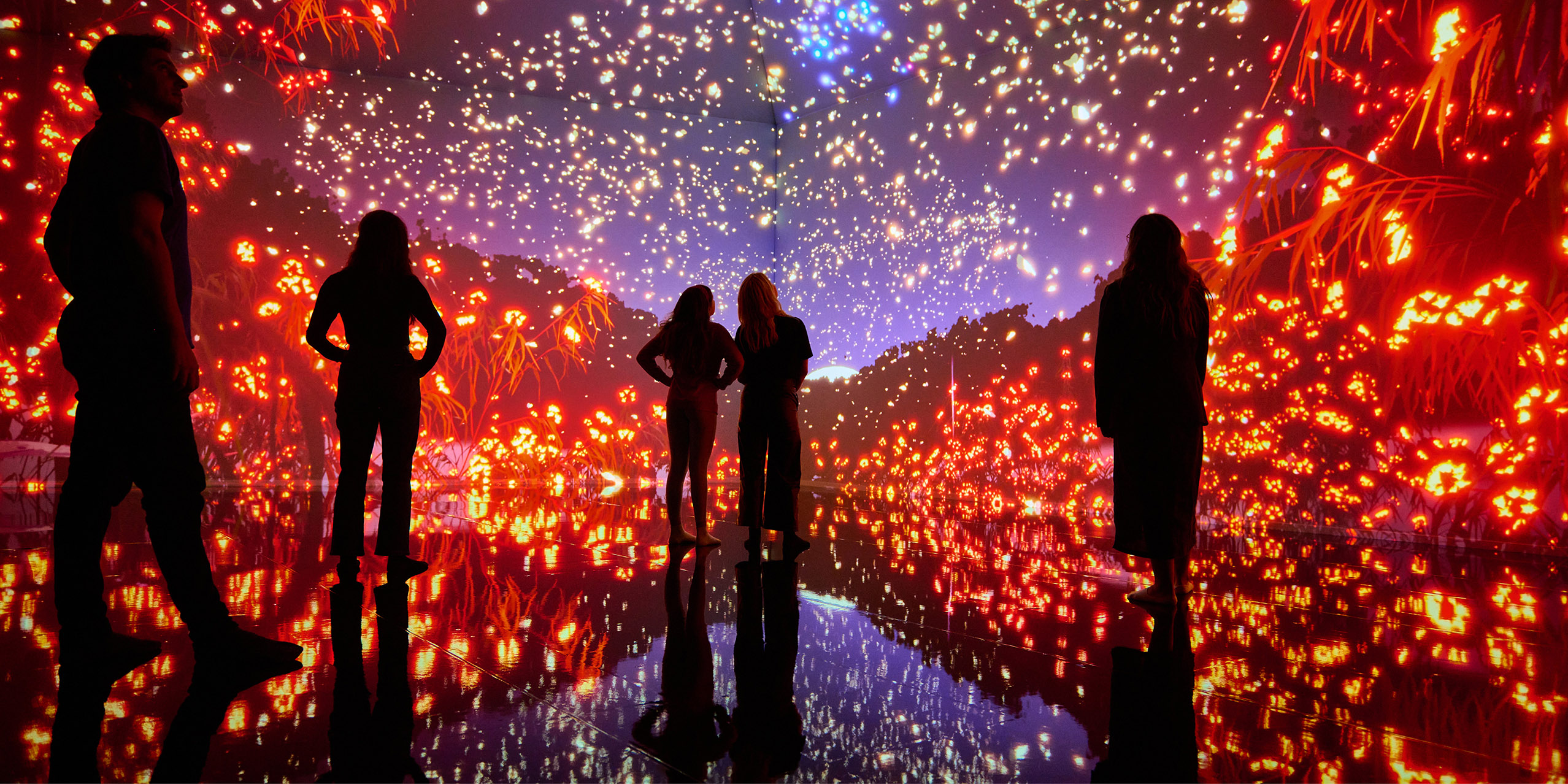The brief was generated through workshops with top creatives, knowledge holders, audiences, and thorough market research. S1T2’s tender response included an in-depth return brief with a strong visitor-focused strategy across visual, sound, technical, lighting, and experience design.
With a process founded on experimentation, iteration and collaboration, our two organisations developed an agile strategy to allow for fast-paced development to design, install, and execute Tyama in a 12-month timeframe. Museums Victoria’s multidisciplinary design team of spatial and communication designers, content experts and experience designers worked closely with S1T2’s design and technical teams to ensure a cohesive experience.
Core to Tyama’s design was First Peoples ways of Being, Knowing and Doing. Keerray Woorroong citizens Yoolongteeyt Dr Vicki Couzens and Yaraan Bundle co-created Tyama with us, from the initial concept to the fully realised immersive experience. Beyond sharing Indigenous stories, Tyama allowed visitors to engage in traditional embodied knowledge. Just as First Peoples paint ochre on their bodies before a traditional dance, visitors are painted in light with the markings of the animal teachers, transforming them into the creatures themselves. By embodying these storytellers, visitors can see, feel, and experience worlds usually imperceptible to humans. Their contributions also influenced communication design, artistic stylings, scripting, and soundtrack –with a possum skin drum keeping tempo in the bespoke orchestral score created with KLANG.
For the show’s climax, S1T2 partnered with Collingwood-based animation house Dirty Puppet. They translated the real-time gaming worlds into a cinematic experience, on two 26 x 8 metre screens.
The final design implemented 360-degree cinematic floor-to-ceiling projections in six distinct spaces, alive with vibrant, interactive digital experiences across the 1000sqm touring hall. The exhibition seamlessly blends real museum objects with interactive digital content, creating a cohesive and emotionally engaging narrative journey which exceeded our expectations and more importantly, those of our audiences.









